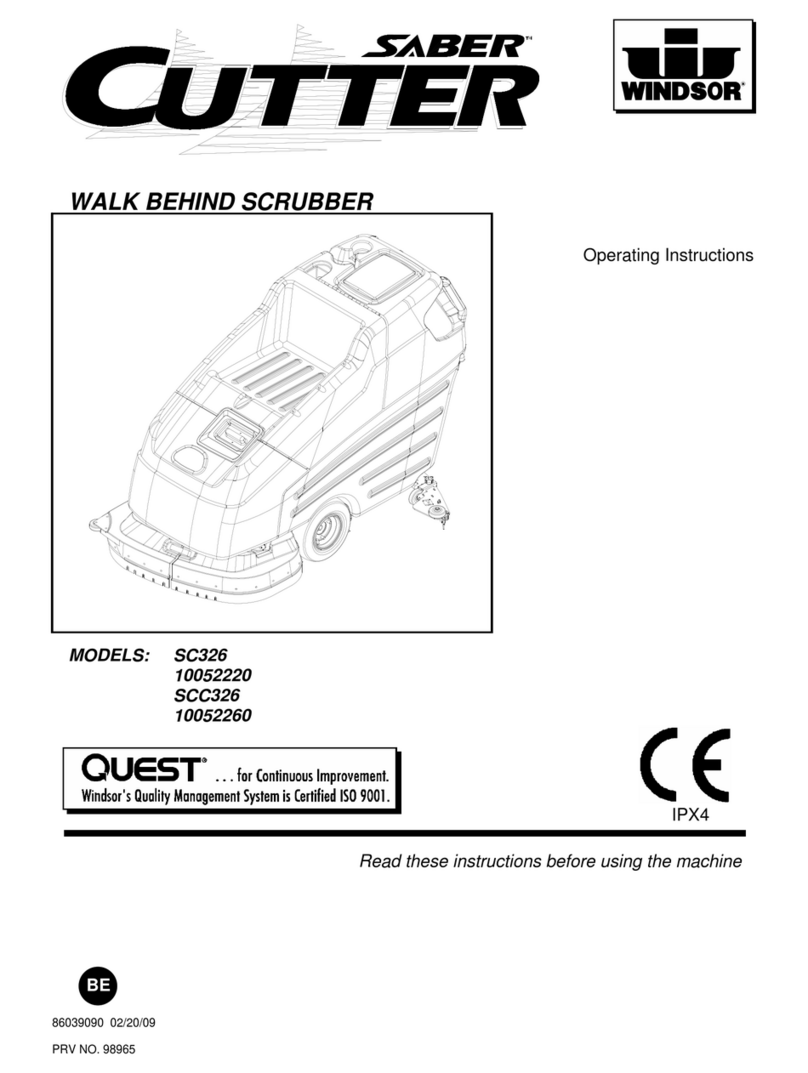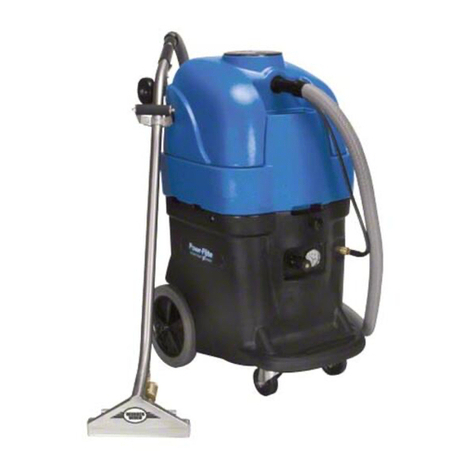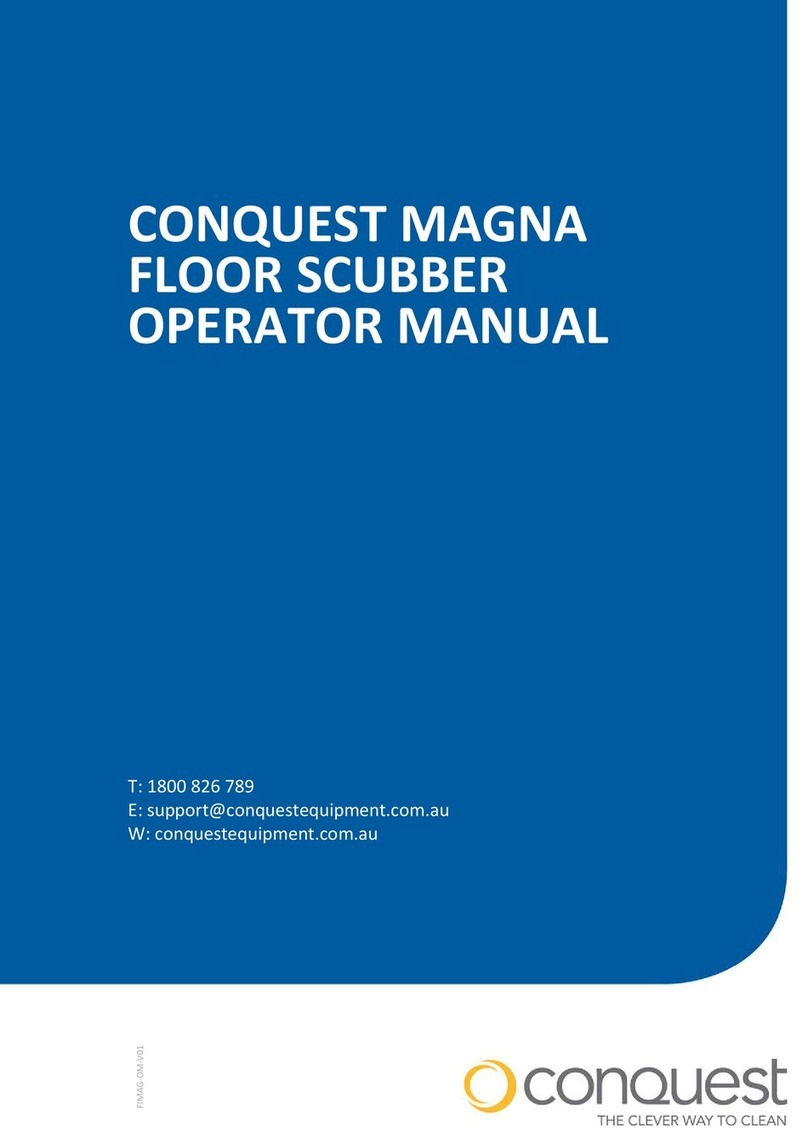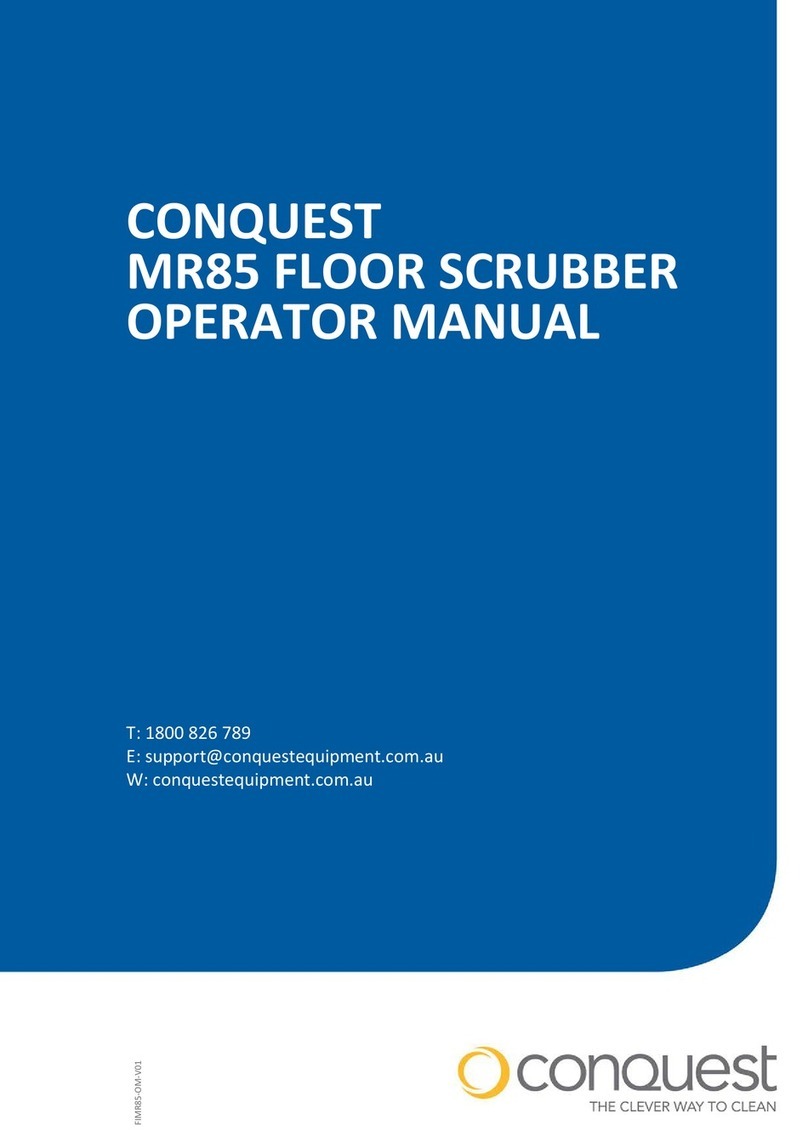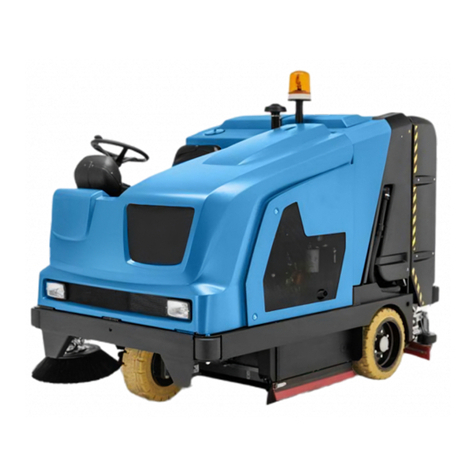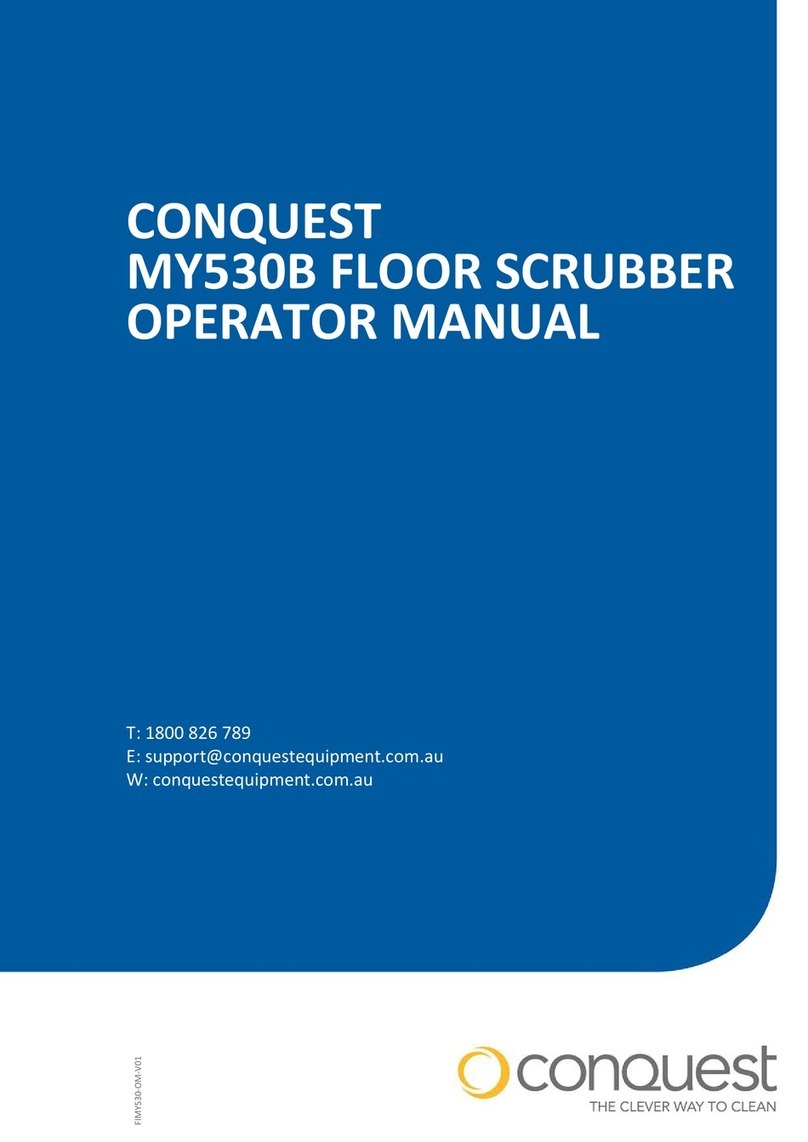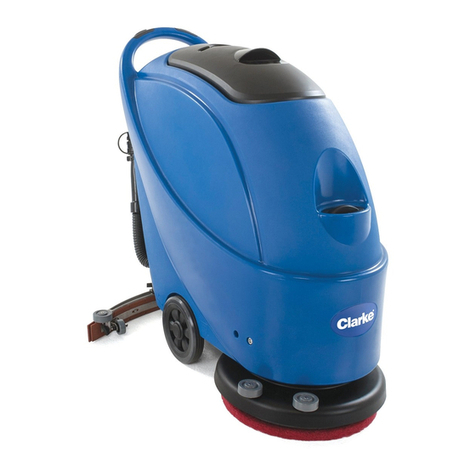
CONTENTS
MAIN MACHINE COMPONENTS...............................................3
CONTENTS.................................................................................4
GENERAL SAFETY REGULATIONS.........................................4
RECHARGING THE BATTERIES .........................................................5
USING THE MACHINE .........................................................................6
DEACTIVATION OF THE MACHINE.....................................................8
MAINTENANCE ....................................................................................8
TRANSPORT ........................................................................................9
SYMBOLS USED IN THE MANUAL ........................................10
PURPOSE AND CONTENT OF THE MANUAL .......................10
TARGET GROUP......................................................................10
STORING THE USE AND MAINTENANCE MANUAL.............10
ON CONSIGNMENT OF THE MACHINE .................................10
INTRODUCTORY COMMENT ..................................................10
IDENTIFICATION DATA............................................................10
TECHNICAL DESCRIPTION ....................................................10
INTENDED USE........................................................................10
SAFETY ....................................................................................10
CONVENTIONS ........................................................................10
SERIAL NUMBER PLATE ........................................................10
TECHNICAL DATA ................................................................... 11
SYMBOLS USED ON THE MACHINE .....................................12
LABELS USED ON THE MACHINE.........................................12
MACHINE PREPARATION .......................................................13
HANDLING THE PACKAGED MACHINE ...........................................13
HOW TO UNPACK THE MACHINE ....................................................13
HOW TO MOVE THE MACHINE ........................................................13
MACHINE SAFETY MEASURES........................................................14
TYPE OF BATTERY TO BE USED .....................................................14
BATTERY MAINTENANCE AND DISPOSAL......................................14
INSERTING THE BATTERIES IN THE MACHINE..............................14
CONNECTING THE BATTERIES TO THE MACHINE SYSTEM........14
RECHARGING THE BATTERIES .......................................................14
ASSEMBLING THE BRUSH (50BT VERSIONS)................................15
ASSEMBLING THE BRUSH (60BT VERSIONS)................................15
ASSEMBLING THE ABRASIVE PAD (50BTO VERSIONS)................15
ASSEMBLING THE CYLINDRICAL BRUSHES
(50BTS VERSIONS) ...........................................................................15
ASSEMBLING THE SQUEEGEE BODY.............................................15
FILLING THE SOLUTION TANK WITH WATER .................................16
DETERGENT SOLUTION...................................................................16
HOUR METER ....................................................................................16
BATTERY CHARGE LEVEL INDICATOR ...........................................16
PREPARING TO WORK ...........................................................16
STARTING WORK ....................................................................17
SCRUBBING WITH DRYING ..............................................................17
SCRUBBING WITHOUT DRYING ......................................................17
DRYING...............................................................................................17
REGULATING THE FLOW OF DETERGENT SOLUTION .................18
REGULATING THE FORWARD SPEED ............................................18
REVERSE GEAR ................................................................................18
EMERGENCY BUTTON......................................................................18
HILLYARD ECO MODE.......................................................................18
EXTRA BRUSH HEAD PRESSURE ...................................................18
RECOVERY TANK OVERFLOW.........................................................19
AT THE END OF THE WORK...................................................19
RECOMMENDED MAINTENANCE WORK .............................19
EMPTYING THE RECOVERY TANK ..................................................19
CLEANING THE DEBRIS HOPPER (50BTS VERSION)....................19
CLEANING THE SQUEEGEE BODY..................................................20
CLEANING THE BRUSH HEAD BRUSH (50BT VERSION) ..............20
CLEANING THE BRUSH HEAD BRUSHES (60BT VERSIONS) .......20
CLEANING THE CYLINDRICAL BRUSHES (50BTS VERSIONS).....20
CLEANING THE RECOVERY TANK...................................................20
EMPTYING THE SOLUTION TANK....................................................21
CLEANING THE WATER SYSTEM FILTER .......................................21
CLEANING THE VACUUM TUBE .......................................................21
EXTRAORDINARY MAINTENANCE OPERATIONS ...............21
REPLACING THE BRUSH HEAD BRUSH (50BT VERSIONS)..........21
REPLACING THE BRUSH HEAD BRUSH (60BT VERSIONS)..........22
REPLACING THE ABRASIVE PAD (50BTO VERSIONS) ..................22
REPLACING THE CYLINDRICAL BRUSHES (50BTS VERSIONS) ..22
REPLACING THE SQUEEGEE BODY RUBBER BLADES................22
ADJUSTMENT INTERVENTIONS............................................22
ADJUSTING THE SQUEEGEE BODY RUBBER BLADES ...............22
DISPOSAL ................................................................................23
CHOOSING AND USING THE BRUSHES ...............................23
EC DECLARATION OF CONFORMITY ...................................23
TROUBLESHOOTING..............................................................24
The following symbols are used to indicate any
potentially hazardous situations. Always read
this information carefully and take the necessary
precautions to protect any people and/or objects that
may be present.
Operator cooperation is paramount for accident
prevention. No accident prevention programme
can be eective without the full cooperation of
the person directly responsible for operating the
machine. The majority of occupational accidents that
happen either in the workplace or whilst moving are
caused by failure to respect the most basic safety
rules. An attentive, careful operator is most eective
guarantee against accidents and is fundamental in
order to implement any prevention programme.
DANGER: Indicates an imminent danger that
could cause serious injury or death.
WARNING: Indicates a probable dangerous
situation that could cause serious injury or death.
CAUTION: Indicates a probable dangerous
situation that could cause minor injuries.
ATTENTION: Indicates a probable dangerous
situation that could damage objects.
GENERAL SAFETY
REGULATIONS
4
